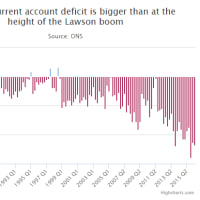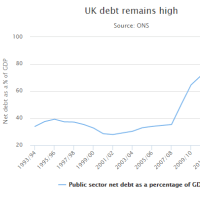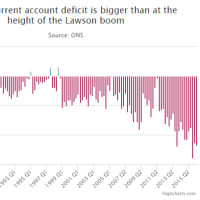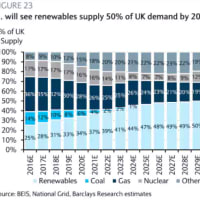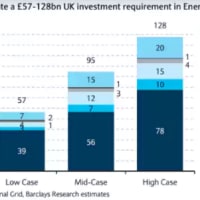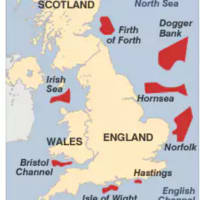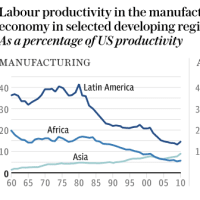China’s very mysterious data
(中国の非常にミステリアスな統計)
By Ambrose Evans-Pritchard
Telegraph: January 26th, 2012
(中国の非常にミステリアスな統計)
By Ambrose Evans-Pritchard
Telegraph: January 26th, 2012
A quick observation.
さくっと観てみよう。
I could not help noticing that China’s imports from Japan fell 16.2pc in December. Imports from Taiwan fell 6.2pc.
中国の対日輸入が12月は16.2%減少したことを気付かずにはいられなかった。
対台輸入は6.2%減少した。
The Shanghai Container Freight Index fell 1.4pc to a record low of 919.44 in November, after sliding relentlessly for several months. It has picked up slightly since.
SCFIは数ヶ月間下がり続けた挙句、11月には1.4%下落して史上最低の919.44をつけた。
その後、僅かに上昇した。
The Baltic Dry Index measuring freight rates for ores, grains, and bulk goods, has fallen 44pc over the last year. Kasper Moller from Maersk in Beijing said weak Chinese demand for iron ore was the key culprit.
鉄鉱石、穀物、バラ荷の輸送費を測るBDIは、昨年一年間に44%下落した。
モラー・マースク北京事務所のカスパー・モラー氏曰く、中国の鉄鉱石需要の軟化が主因とか。
Cautionary warning. The BDI index also reflects the shipping glut, so it is not a pure indicator.
慎重に警告しよう。
BDIは海上輸送がだぶついていることも反映しているので、純粋な指標ではない。
However, rail, road, river and air freight volume for the whole of China fell to 31780m tons in November (latest data), from 32340m tons in October. Not a big fall, but still negative. (National Bureau of Statistics of China.)
とはいえ、中国全土の鉄道、道路、河川、航空の11月の輸送量は、10月の3,234千万トンから3,178千万トンに減った。
大幅な減少ではないが、それでも減ったには違いないのだ。
Chinese electricity use was flat in over the Autumn, with a sharp fall in the (year-on-year) growth rates from 8.9pc in September, to 8pc in October, and 7.7pc in December.
中国の電力使用量は秋の間は横ばいで、増加率(前年比)は9月は8.9%、10月は8%、12月は7.7%と大きく落ち込んだ。
Residential investment has been contracting on a monthly basis, and of course property prices are now falling in all but two of China’s 70 largest cities.
住宅投資は月単位で見ると縮小している。
言うまでもなく、不動産価格も今や中国大都市70都市のうち2つを除く全てで下落しつつある。
So how did China pull off an economic growth rate of 8.9pc in the fourth quarter?
では、中国はいかにして第4四半期に8.9%などという成長率を叩き出したのか?
Beats me.
さっぱりわかりませんです。
I strongly suspect that the trade and power data reveal the true state of China’s economy.
貿易統計および電力統計こそが中国経済の真の状態を明らかにしているのではないか、と僕は強く疑っている。
There clearly was a pick up in early January but I stick to my view that China has inflated its credit bubble beyond the limits of safety – an increase of 100pc of GDP in five years, or twice US credit growth from 2002-2007 – and that Beijing cannot continue to gain much traction with this sort of artificial stimulus.
1月上旬には明らかな改善が見られたものの、中国は安全基準を超えるまでに信用バブルを膨らませてしまった(5年間でGDP比100%の増加、もしくは2002-2007年の米国の信用増加の2倍)、また、中国政府がこの手の人工的景気刺激策によって勢いを得続けることは不可能だ、という自説を僕は曲げない。
Indeed, the extra boost to GDP from each extra yuan of credit has collapsed, according to Fitch Ratings.
そう、フィッチによれば、信用供与額1元につき増加するGDPが低下したそうです。
A final point. There is a widespread misunderstanding that China’s households can easily come to the rescue by cranking up spending because they have the world’s highest savings rate, and consumption is just 36pc of GDP.
最後のポイントです。
中国は世界最高の貯蓄率を誇る上に、消費は僅かGDP比36%なのだから、家計部門の支出増加で支援するのは簡単だ、などという誤解が広まっています。
Prof Michael Pettis from Beijing University puts that one to rest. The Chinese do not have a much higher personal savings rate than other East Asians. The reason why consumption is so low is that wages are low, the worker share of GDP is low, and the whole economy is massively deformed and tilted towards excess investment.
北京大学のマイケル・ペティス教授はこれを一刀両断にしています。
中国人の個人の貯金など他の東アジア人と大差ないのです。
消費がここまで少ない理由は、賃金が低いからです。
労働者が少ししかGDPをシェアしていないからです。
経済全体が著しく歪んでいる上に、過剰投資に傾いているからです。
This is deeply structural. It cannot be changed with a flick of the fingers, and contains the seeds of its own destruction.
これは非常に構造的なものです。
一朝一夕で変えられるものではないのです。
また、自滅の種を含んでいるのです。
China is a marvellous country. I wish them the best. But they have not found the secret formula for perpetual uber-growth.
中国は素晴らしい国です。
幸運を祈ります。
でも、中国は永遠の超成長を実現する秘密の方法を発見したわけではないのです。
No such formula exists.
そんなものは幻想なのです。












